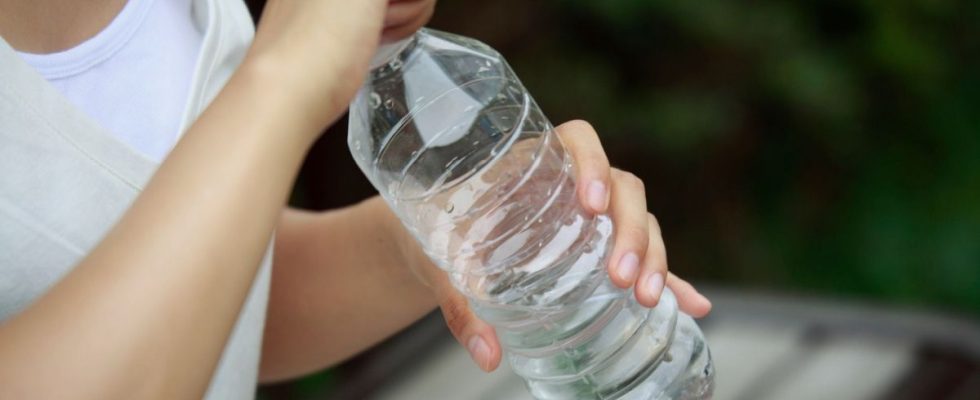Published on
Updated
Reading 2 mins.
in collaboration with
Dr Gérald Kierzek (Medical Director of Doctissimo)
Medical validation:
March 16, 2023
According to researchers, reusable water bottles contain nearly 20.8 million CFU of bacteria, some of which are responsible for serious infections, such as pneumonia.
If staying hydrated is good for your health, drinking from your reused water bottle might be worse than sitting on the toilet bowl. This is at least what emerges from a new study, conducted by the American company WaterFilterGuru.
Nausea, vomiting and diarrhea
To reach this conclusion, the researchers looked at how colony-forming units (CFUs) (a unit used to estimate the number of bacteria in a sample) reside inside four popular types of water bottles.
Result ? On average, these contained nearly “20.8 million CFU of gram-negative bacteria“. For comparison, a toilet seat has 515.
While water bottles with pour spouts or screw tops turned out to be the most contaminated (30 million CFU), soft top bottles seemed to be the most contaminated. “the cleanest“, containing only a tenth of this amount of bacteria (3 million CFU).
Another notable finding of the study: two types of bacteria were discovered in reusable water bottles: gram-negative rods and bacilli.
However, Gram-negative bacteria can cause a certain number of serious infections, potentially resistant to antibiotics (pneumonia), and bacilli lead to various gastrointestinal problems (nausea, vomiting, diarrhoea, etc.).
Therefore, experts urge caution and recommend washing reusable water bottles thoroughly.”with warm soapy water“.
Properly clean your water bottle: instructions for use
For his part, Dr. Kierzek, invites you to use common sense.
If it is impossible”to avoid all forms of bacteria in daily life“, a few good reflexes nevertheless make it possible to reduce the risk of infection.
“First of all, you should change the water in your bottle regularly to prevent it from stagnating. Then, you must disinfect the bottle with boiling water or white vinegar, but also use purified water, free of all impurities. You also avoid passing your bottle to a loved one or putting ingredients inside, such as citrus fruits or fruit juices. Finally, we prefer a smooth bottle, without roughness, to prevent bacteria from developing in it.“, recommends the medical director of Doctissimo.
Of course, we do not forget “hand washing, before and after using the bottle“, concludes the expert.
